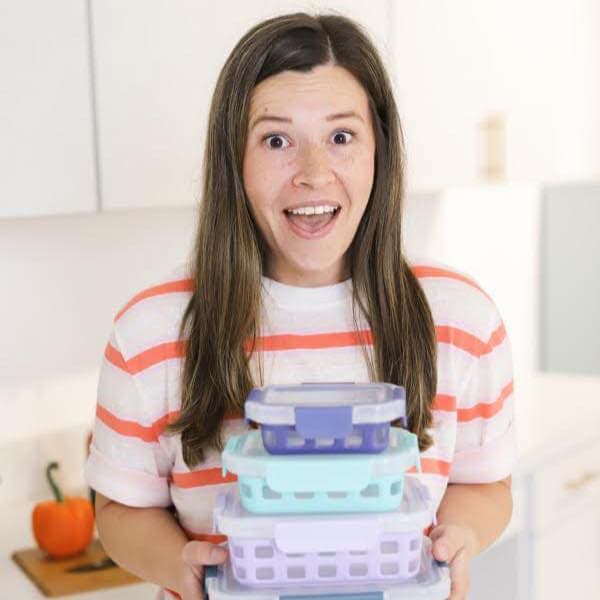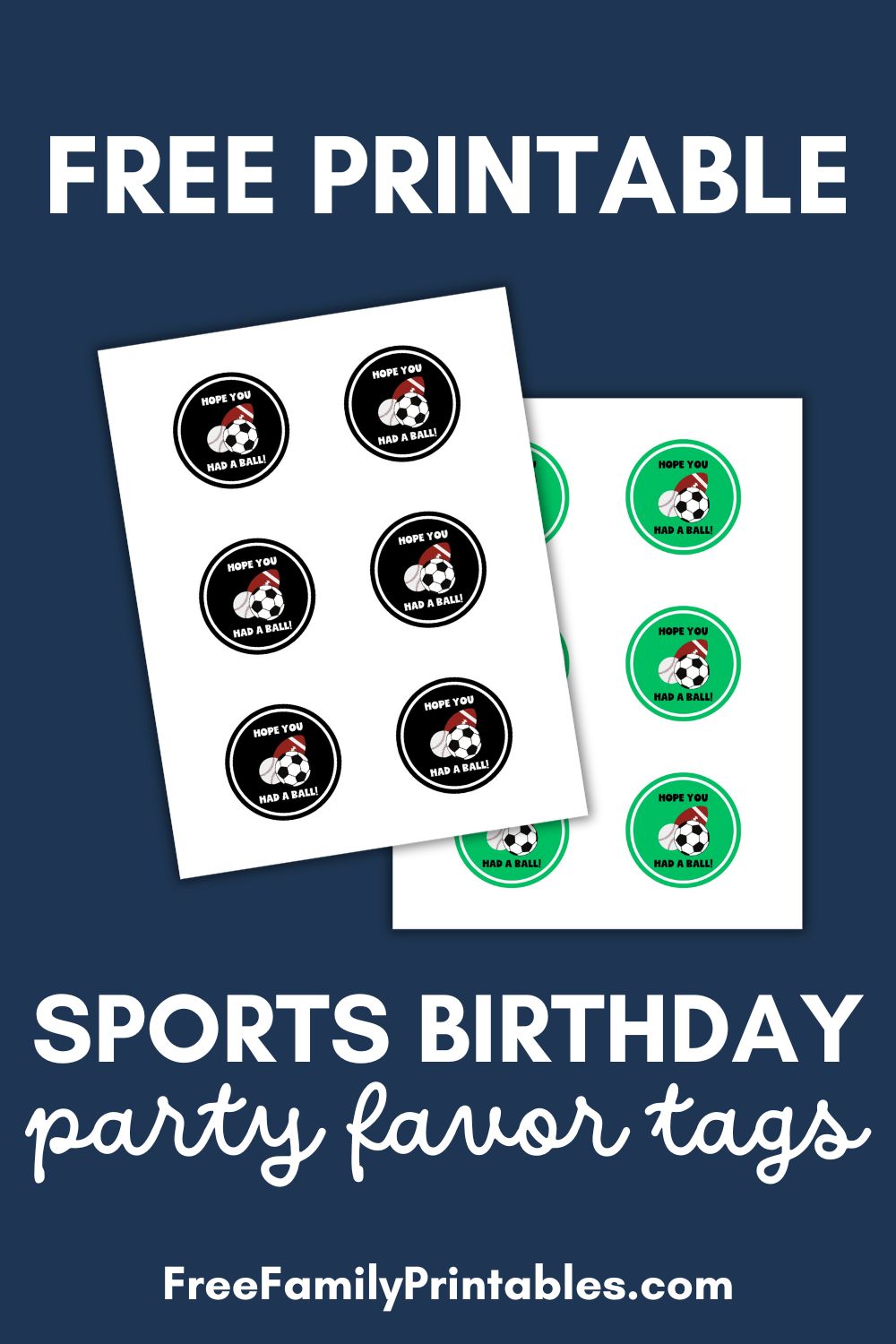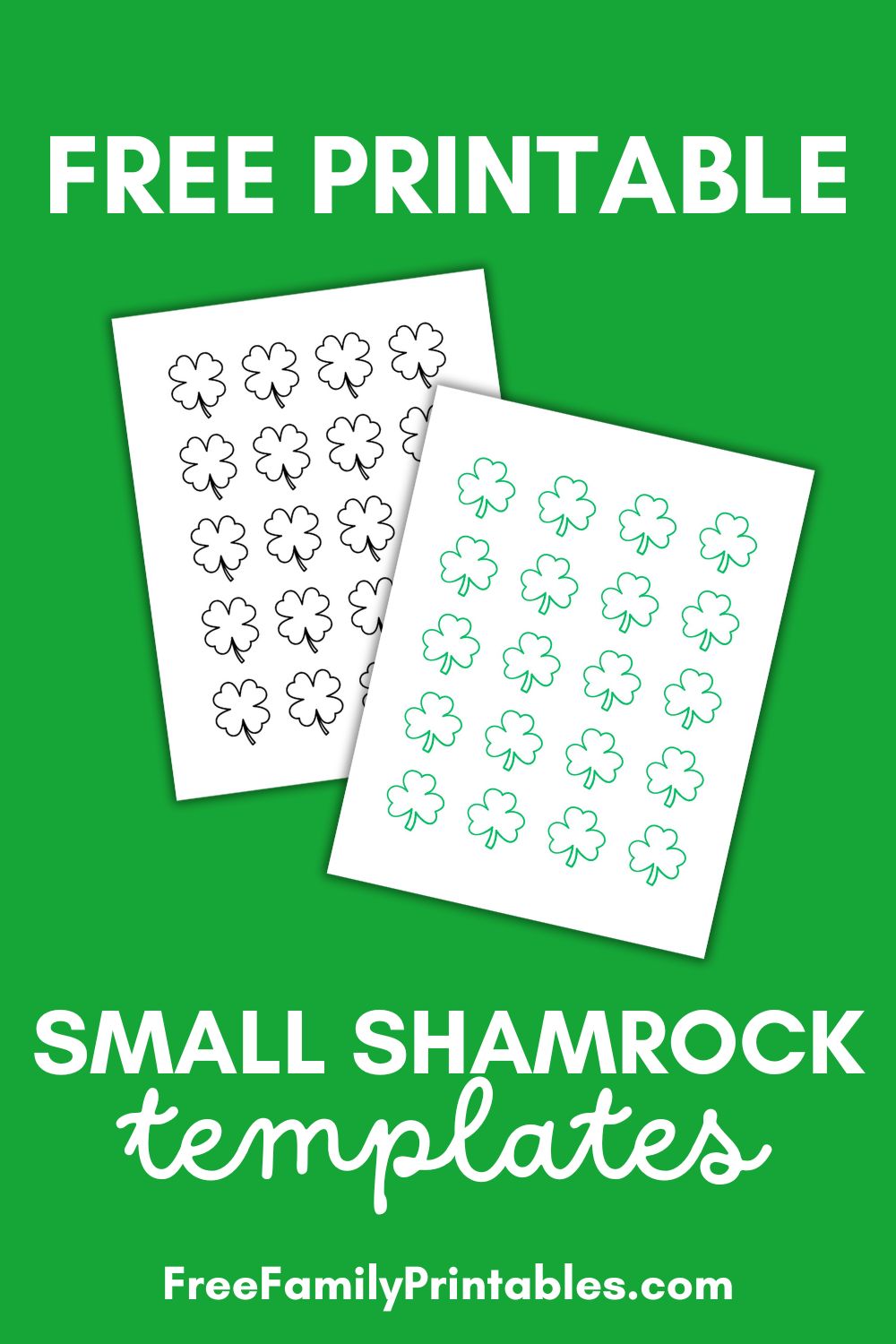How do you organize your monthly expenses? If you’re like most people, managing your monthly expenses can be a daunting task and often gets pushed aside.
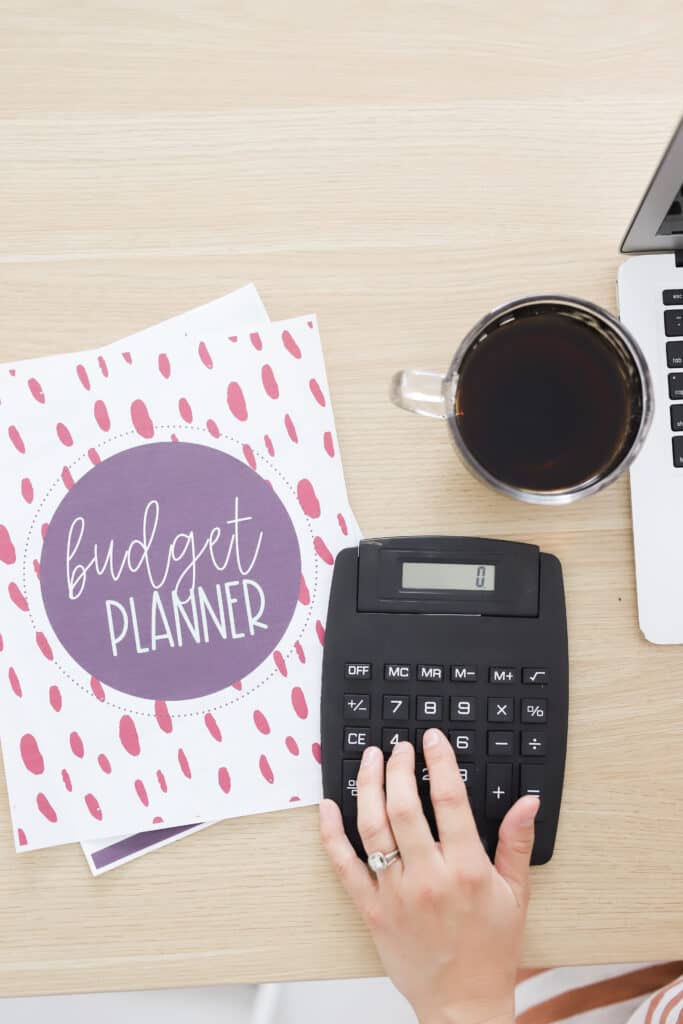
There are so many different things to keep track of – bills, bank statements, recipes, loans, payments, and the list goes on and on! In this blog post, I will provide you with some of my best tips on how to best manage your monthly expenses and get those bills and receipts organized.
Why it’s important to organize your monthly expenses
Organizing your monthly expenses is key to tracking your spending and creating a plan for your finances that fits within your budget. If you don’t have your monthly expenses organized in a reliable way then every time you get a bill, it could become increasingly overwhelming, which is the last thing we want on our journey to smart financing.
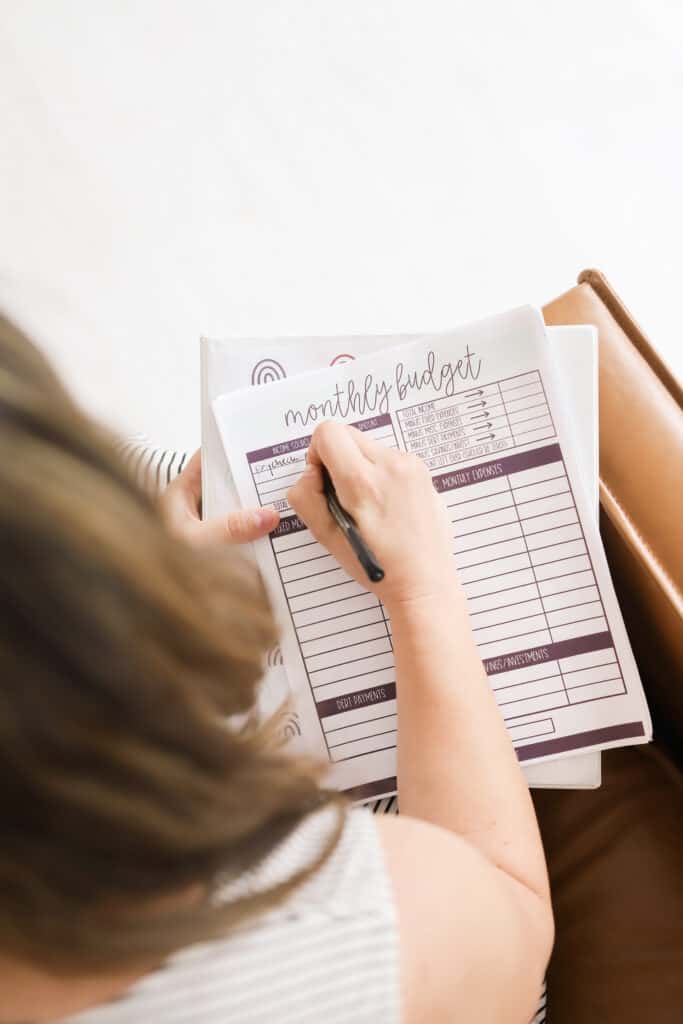
A lack of organization can also lead to important papers being lost, like any receipts you may need for reimbursements or important bills that will accrue late fees if they are not dealt with promptly. Organizing your monthly household bills is also a great first step in budgeting effectively because it allows you to note all the money going out every month versus the money you have coming in.
From there, you can start to cut out unnecessary expenses and highlight the essentials like rent, utilities, insurance, and others. It all starts with motivation and a clear plan to get to your end goal with organization.
In this post I will cover several different tips and tricks to make managing your monthly expenses easier and tracking your expenses a no brainer.
Make sure you grab my FREE budget planner by filling out the form below!
How to track your expenses to create an accurate monthly budget
Tracking your expenses in order to create an accurate budget can be overwhelming but if you take the process one step at a time, then you can conquer any amount of clutter.
Step 1: Sort and categorize
The first part of decluttering your bills and receipts is to create specific categories for each expense and sort them into their respective piles. Essentially, all of your bills and receipts can be separated into categories that are something like: utilities, expense receipts, other financial papers, junk mail to be recycled, and mail to save for later. Then, you will get rid of anything that needs to be recycled. From here, we can go to the next step.
Note: If you are overcome by mail and various papers (even your kids’ school work) , sorting and categorizing is a great way to get a handle on it all as well!
Here is another excellent resource specifically for decluttering your finances that tackles papers and junk mail if you are looking for a more in-depth way to sort your piles of papers.
Step 2: List the expenses
This next step relies on getting an accurate representation of all of your monthly expenses. You will want to get started with a helpful life and budget planner, or other similar way to write down all of the spending you are doing each month. Using a template like this will help you visualize where your money is going each month and, at the same time, cut out anything that is unnecessary.
Write down all of the expenses from the combination of paper bills, electronic bills, expense receipts, and any other monthly spending. These can all be sorted into the monthly expense tracker section of the template, and slowly you will see the individual spending expenses stack up. This leads to the third step.
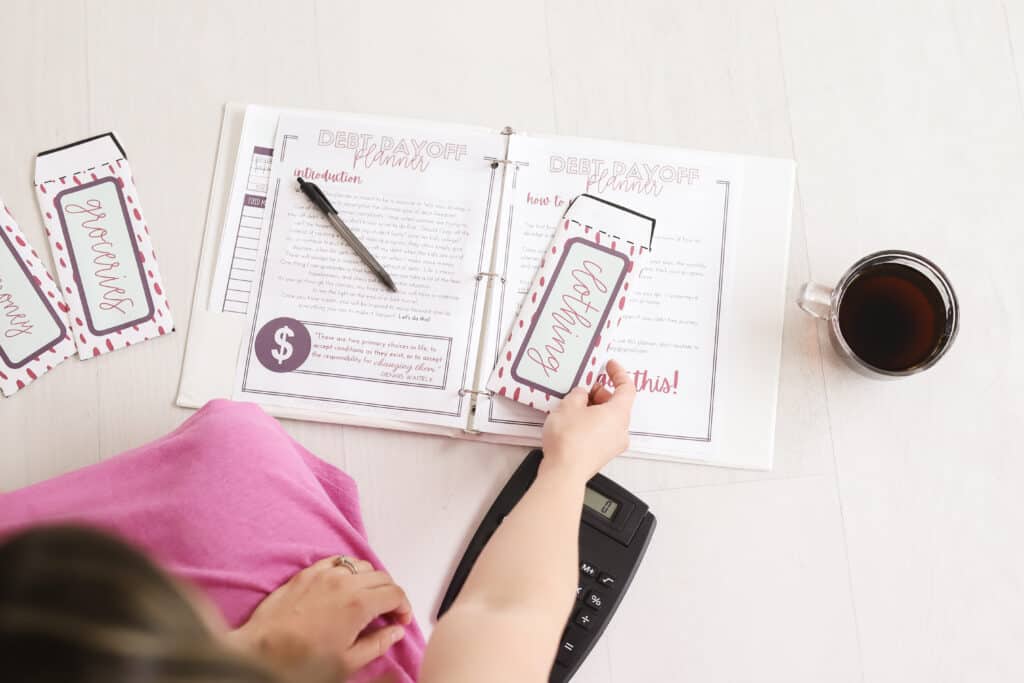
Step 3: Cut out the unnecessary
Since you have all of your monthly expenses visualized into your tracking template, you can clearly see where all of your money for the month is going. If you have not done this before, or haven’t done it in a long while, then you will likely see some things that seem unnecessary immediately.
If you go through and notice that that gym you haven’t been to in over 8 months is still billing you, then it is probably time to cancel it. I know that some gyms have purposefully annoying rules for canceling but cutting out that useless expense is worth it!
Other things like cable and streaming services that you don’t use should be on the chopping block as well. If you have streaming services, then you don’t need that expensive cable bill anymore. Just pay for the internet package. Vice versa, if you have and only use cable, cancel your streaming services! You don’t need both if you are trying your best to budget. This leads us to the final step.
Step 4: Build your budget
In this phase, since you have gone through, organized, and cut out unnecessary expenses from your monthly spending, it is time to build a budget that works for you. There are plenty of ways to do this, but the best advice can be found here. This page shows you how to make a budget binder and the important features of a successful budget.
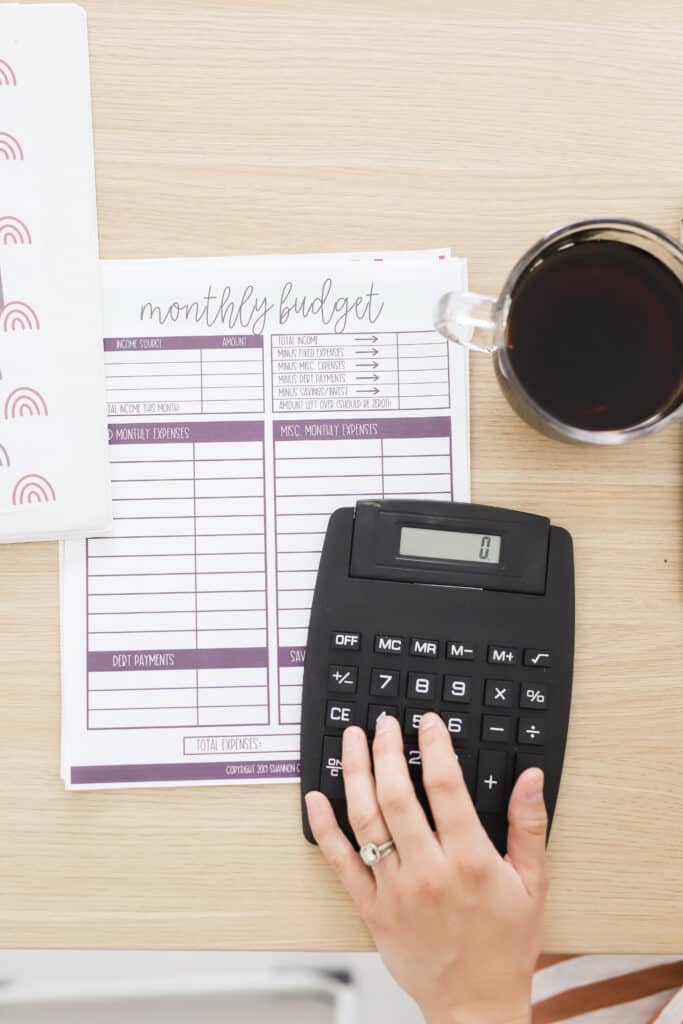
4 Ways to Organize Household Paper Bills & Receipts
Filing Cabinet
Some of us have a filing cabinet in a back room somewhere that is never used nowadays, but this is the perfect opportunity to utilize this to help keep all of your financial documents organized. Alternatively, you can turn any empty desk drawers that will fit manila filing folders into a filing drawer that will help keep all of your papers separated but still localized in a single place.
Another great aspect of using a filing cabinet is that there are several different cabinets that can be used to further organize your documents. By this, I mean that you can label each cabinet with items like: personal records, expenses, tax documents, and other sensitive documents that you want to be stored away. In each of the cabinets, you can also separate and label your expenses cabinet as we did in step one of our sorting processes.
A simple filing box like this is a frugal and space saving option to store your files.
This means having different folders for essential expenses like utilities and rent, expense receipts, and other spending charges. Another good thing about a filing cabinet is that most come with the ability to lock them, so you can store sensitive documents safely.
Accordion Folder
Switching gears to a much simpler method of organization that is portable and able to be placed in your home office or moved to wherever is most convenient when it comes to sorting and paying these bills. An accordion folder is a cheap and easily accessible way to sort and keep all of your expense reports and financial documents organized and not scattered along the desk or end table of your living room to create those stressful piles of mail again.
Accordion folders usually come with tabs that you can create labels for so you can continue to keep up with our categories from our first sorting steps. This is an easy organization option not only because it can be found at any office supply store but because it is easy to carry. This means you will have no excuse to let the mail pile up because as you sort through the mail in the living room, you can bring the accordion folder with you and immediately deal with the bills and file away what needs to be organized by its importance.
Wall Organizer
A wall organizer is another classic way to store mail that you have probably seen before. A wall organizer is a simple way to keep all of your expense documents stored and organized, with the added benefit of it being out of the way. You won’t have to worry about a bulky cabinet or anything that may further clutter a desk or table if you work from home or have kids or a partner who may leave things around as well.
There are many different types of wall organizers, so you can find one that fits your home design and your organizational style. For example, this is a nice sleek organizer which would fit in well in a home office setting and doesn’t draw unwanted attention away from the room with its neutral colors. It also has multiple tier options so you can customize how many slots you will need to sort your papers.
Another, more rustic option is this one which doesn’t offer as many options for tiered slots but instead offers chalkboard fronts for easy labeling and making notes. This option also has key hooks for those who like to maximize a purchase’s utility.
Desk Organizer
A desk organizer may be something you have seen every day if you work in a school or office setting, but they are also an extremely useful tool for organizing paper clutter. Paper clutter which in our case will be our bills and expenses that we have sorted and need to store. The best part of using a desk shelf organizer for this purpose is that you can sort the expense documents at a space that is already designated for similar purposes.
Whether you have a home office or another designated area in the home for computers and paperwork, this is a space that allows you to comfortably get things done. In this space, you can use the desk organizer to sort and to use to pay bills by priority. If you are already at the desk to sort the documents, then you can also get ahead of your expenses by sitting down and planning out the payments. A great option for any size desk is this organizer.
Due to its height, it only takes up a small corner of the desk and blends in well with a neutral room. It is made of sturdy black steel and contains 6 trays, along with an extra drawer for sticky notes and pens so you can mark off paid bills as you go. A slightly different choice that will blend into a more pastel and feminine office, is this beautiful rose gold 4 tier tray.
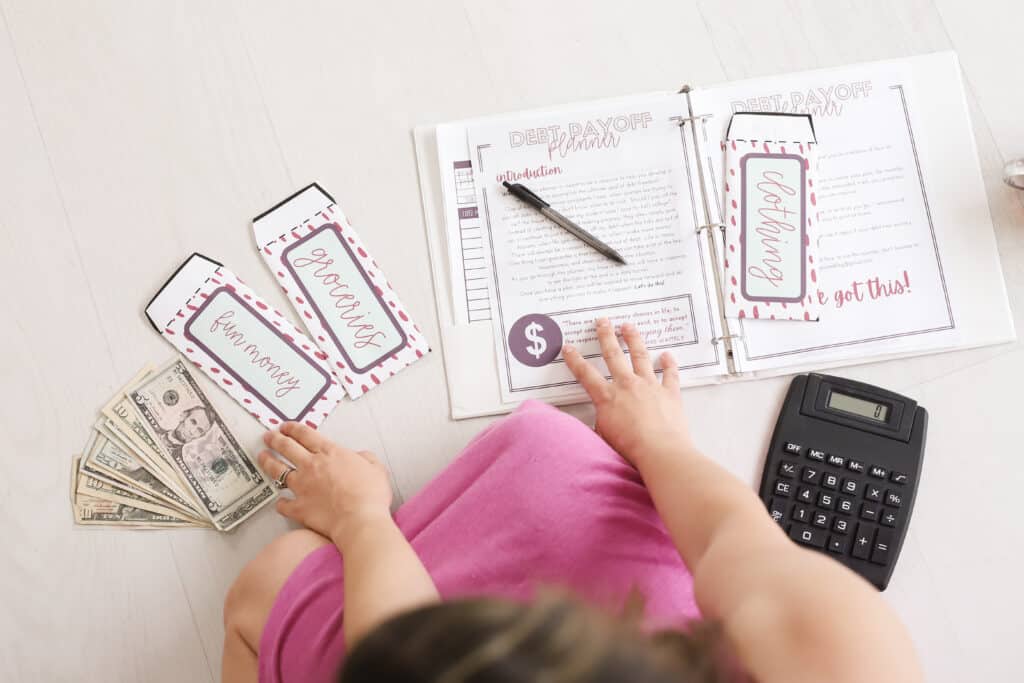
4 Ways to Organize Digital Bills & Receipts
Email Folders
The simplest way to sort electronic bills and receipts are through email folders. Most electronic bills are sent to us through the email we use to pay those bills online with. This means every month, you should be receiving emails from your various billers; this may seem annoying, but it gives you a good electronic paper trail that you can use for organization.
The best part about this is that these rarely go to the spam folder, and they are much less clutter than paper bills which can be lost for good if they get thrown away. It doesn’t matter which email you are using; each platform has the ability to separate into different folders. For Outlook, it is as simple as a right-click on your inbox to make a separate folder, and from there, you can manually place the bill emails into the folder, or you can have them sent to that folder from then on in the settings. Google Drive and Gmail also have similar functions where you can create folders and send the bills to those separate folders.
Download and Sort
Another way to sort your electronic bills and receipts is to download the attachments from the emails, the monthly billing statement itself, and place it in a folder on your hard drive or an external flash drive. You can create a folder for expenses and place these statements and any downloadable receipts there for easy reference.
This is a good option because it allows you to save the actual billing statements and receipts to be used if you need them for other expense reports or any invoices. This is also a good option because you can scan in your other receipts or billing statements that you still have paper copies of, and you can have all of your expense documents in one location. This is an easy way to reference all of the documents for tax reasons or for easier budgeting if you use a spreadsheet or online budget calculator.
Use the Mint App
Mint may seem familiar to you because they are another arm of the Intuit brand, which provides a lot of us with access to TurboTax. Mint has great options for budgeting and organizing digital bills. In addition, this app offers credit monitoring and tracks your monthly spending by connecting to your accounts. This app gets rid of the archaic online spreadsheets you have been meticulously updating and replaces them with an easy and adaptable expense tracking app.
Use the Prism App
The Prism app is a unique tool that actually pulls all of your bills from providers for you into the application and organizes them all in one place, the app! It also allows you to pay bills for all the services directly from the app. So that means no more clicking back and forth between multiple different platforms just to make sure all of your bills are paid.
This app offers the most ease of use in the digital age. It encrypts your data and offers biometric authentication so that you can feel secure with all of your bill information in one place, rather than scattered throughout your phone and email. The best part? The app is free to download, with no attached fees. If you’re tech-savvy and have all of your bills set to be delivered online, then this app is a wonderful download that will make your expense tracking much easier and more organized.

How to make a digital copy of your paper bills
Making a digital copy of your paper bills can seem intimidating, but there are many easy ways to do this. The most common way is to use your printer if it has scanning abilities. Most of them do! This takes very little effort as you will just scan the document or receipts and use whichever scanning application came with the printer. These usually allow you to turn the documents into PDFs, jpeg, png, or other formats that will be able to be saved in a folder on the computer. Other ways to do this are by scanning applications on your phone.
One of these is Expensify. Expensify works with both iOS and Android devices, meaning everyone with a smartphone can use it. It will scan and create a digital copy of the receipt, but that’s not all. The app will also pull the information from the receipt and sync it with their accounting software to help create invoices or track spending. This app offers other features such as bill splitting and payment requests too, so it really is a great download.
What is the easiest way to track monthly expenses?
The easiest way to track your monthly expenses starts with the 4-step process of organization outlined in this post. Sort into different categories, list out the expenses, cut out any unnecessary spending, and build a budget that works for you. Beginning with these steps and utilizing the tips here for budgeting and decluttering, you can feel like you have more control over expenses.
Having that sense of control over your spending and your monthly expenses is the best step because it takes a lot of the stress off of your mind. These simple acts of organization can help you have that control and make the thought of your expenses seem manageable because they are! This template for listing out your expenses is another great tool that makes tracking your expenses easy, and when you know your expenses, you can reduce them and save more money for your budget.

If you want to take more of the guesswork out of tracking your expenses and digitize more, then the apps mentioned above, like Prism and Mint, are wonderful choices that will take a lot of the manual tracking off of your worries list. In the digital age, it is a lot easier and better for the planet to switch to electronic billing, and when you do this, all of your expenses are centered in one location, your smartphone.
We all have them, or most of us do, and they are always with us. So, these apps, which track spending for us, and allow us to pay bills from one application like Prism, make life and stress about finding all of our bills a thing of the past. However, some of us still like the old-fashioned way of physical bills, in which case the tips in this post will save you the worry of losing everything on that cluttered coffee table.

